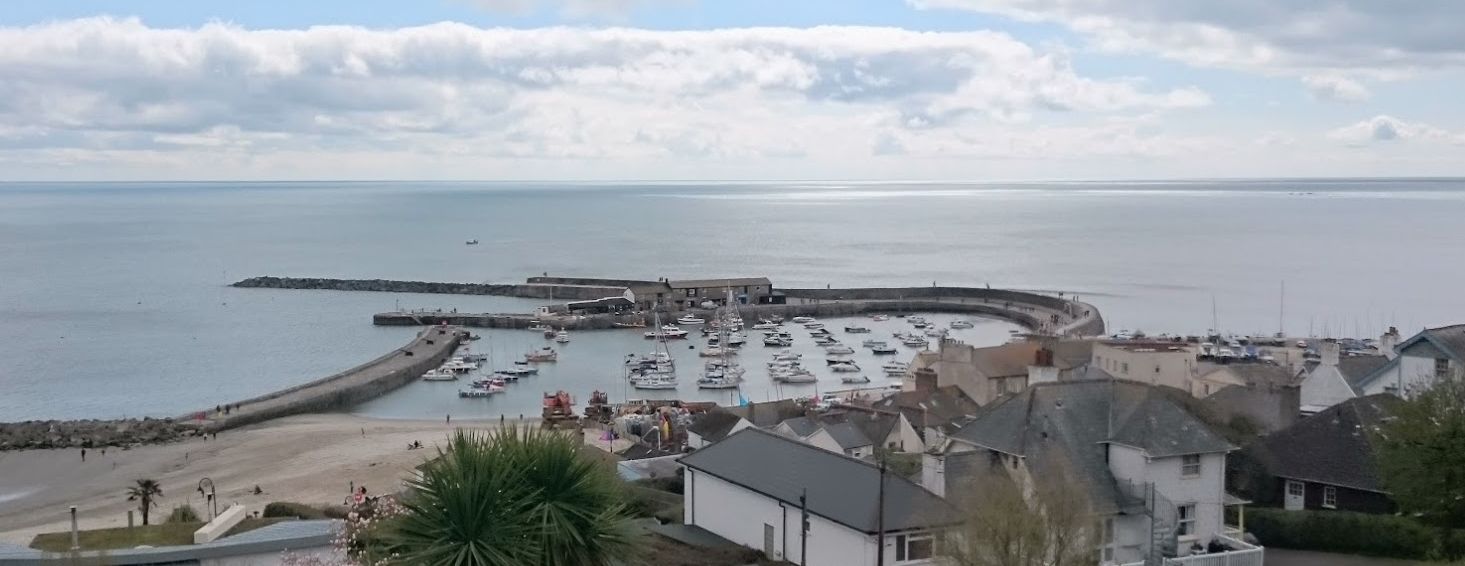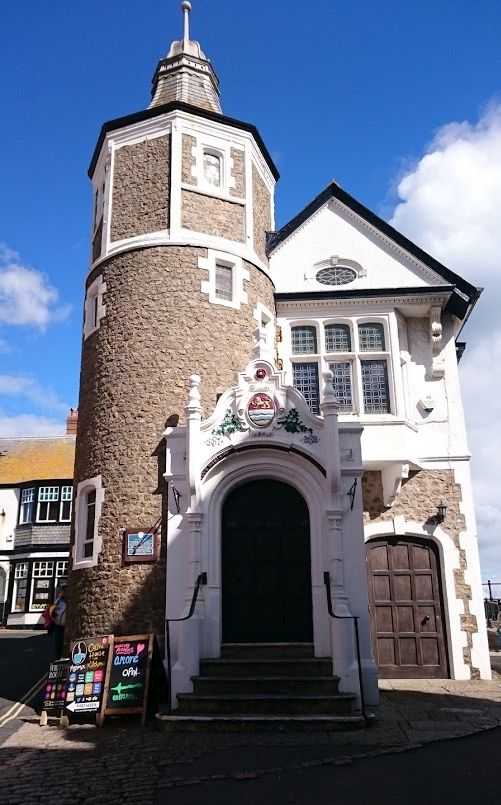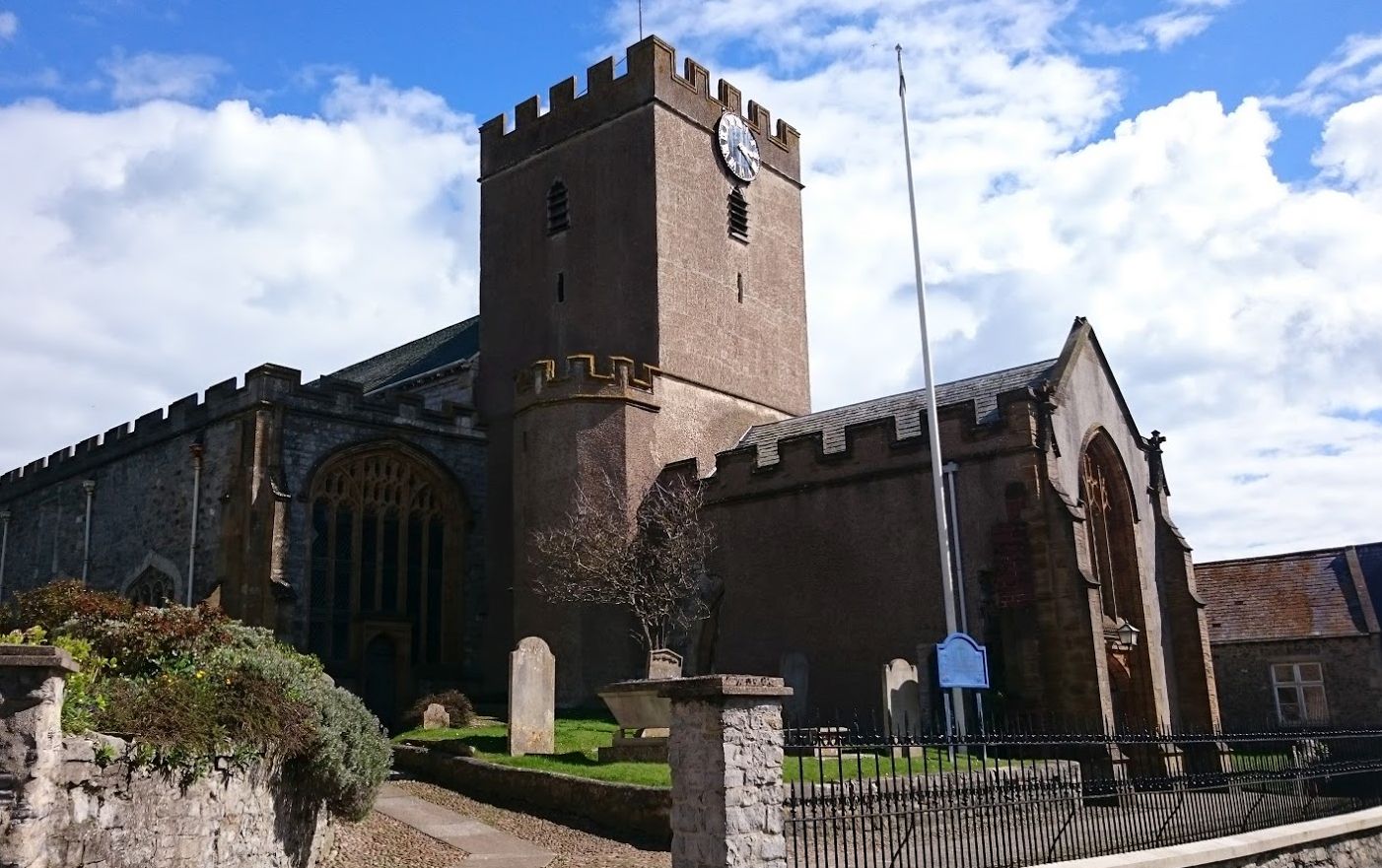 |
Lyme Regis |
|
 |
Lyme Regis |
|
|
Lyme Regis is a coastal market town located in West Dorset on Lyme Bay, 5 miles south east of Axminster. Its name is derived from the River Lym upon which it is situated. In the 19th century it became a notable watering-place and resort and in 1895 was described as having "streets lighted with gas and well paved". One of Lyme's best known features is its sea wall, known as 'The Cobb' which dates from at least 1328, when it was mentioned in a document as having been damaged by storms. 'The Cobb' has been included in literature and was mentioned in Jane Austen's 'Persuasion' and John Fowles 'The French Lieutenant's Woman.' The parish church is
St Michael the Archangel
(dedicated in 1405) and the registers date from 1538 (although there is a
gap between 1572 and 1653). Within the town are several non-conformist
places of worship including the Catholic church of Sts Michael & George, Poulett House Chapel,
a Congregational Chapel, a
Wesleyan Chapel, a Bethany Chapel and meeting rooms for the Brethren.
The
Baptist Church
is first mentioned on 15 Oct 1653 and its people likely first met in each other's house,
such as Elizabeth Goodman's in Silver Street. |
|
|
The municipal cemetery is located 3 miles from the town centre. There were also almshouses, a cottage hospital, several hotels, a Masonic Lodge, the headquarters of the 1st Dorsetshire Voluntary Artillery and several schools. In the 2011 Census the town's parish and the electoral ward had a population of 3,671. |
|
|
|
In the 13th century, Lyme developed as one of the major British
ports. A Royal Charter was granted by King Edward I in 1284 when 'Regis'
was added to the town's name. The charter was confirmed by Queen Elizabeth
I in 1591. In 1644, during the English Civil
War, Parliamentarians withstood an eight-week siege of the town
by Royalist forces under Prince Maurice. The Duke of Monmouth landed at
Lyme Regis at start of the Monmouth Rebellion in 1685. On 11 May 1844 a
large fire destroyed several notable buildings, including the Customs
House, Cups Hotel and the George Inn. |
|
Lyme Regis is noted for its fossils and its cliffs are part of the Jurassic Coast - a World Heritage Site. One of Lyme Regis' most renowned fossil hunters was Mary Anning (1799-1947), who discovered the first ichthyosaur dinosaur fossil in Lyme Regis' Blue Lias cliffs. Mary's baptism can be found in the independent church records (the Congregational Church itself is now the Dinosaurland Fossil Museum and her burial stone can still be seen on the left side of St. Michael the Archangel's churchyard. |
|
The new Online Parish Clerk (OPC) for
Lyme Regis is Theresa Rose
|
|
| Census | 1841 Census
[Pearl Blanking] 1851 Census 1861 Census District 2, District 3(part 1), District 3(part 2), Vessels in Harbour [Jacqui Bowen] 1871 Census [Ron Adams & Lynne Radford] 1881 Census 1891 Census 1901 Census |
| Parish Registers |
Baptisms 1813-1814 [Theresa Rose] Marriages 1653-1753 [Philimores] [Kim Parker] Marriages 1813-1820, 1850, 1910-1919 [Theresa Rose] Burials 1813-1825 [Liz Draper] |
| Non Conformist Records |
Coombe Street Independent Chapel
Baptisms 1775-1817 St Michael & St George RC Monumental Inscriptions index |
| Other Records |
CWGC Burials in Lyme Regis Cemetery [Richard Smith] Lyme Regis Town Criers & Sergeants at Mace [1859-2023] [Richard Smith] Will of Richard Davidge [d. 1605] [Mike Russell] Will of John Hingeston [d. 1831] [Ros Dunning] Will of Amelia Anning [d. 1858] [Ros Dunning] |
| Maps | |
|
View Larger Map |
Records held at the Dorset History Centre |
Registers Christenings 1543-1996. Marriages 1653-1972. Burials 1653-1958. |
 The Cobb ©2016 Dorset OPC/Jon Baker |
 Lyme Regis Guildhall ©2016 Dorset OPC/Jon Baker |
 Lyme Regis Parish Church ©2016 Dorset OPC/Jon Baker |
Visitors to Dorset OPC
Copyright (c) 2025 Dorset OPC Project